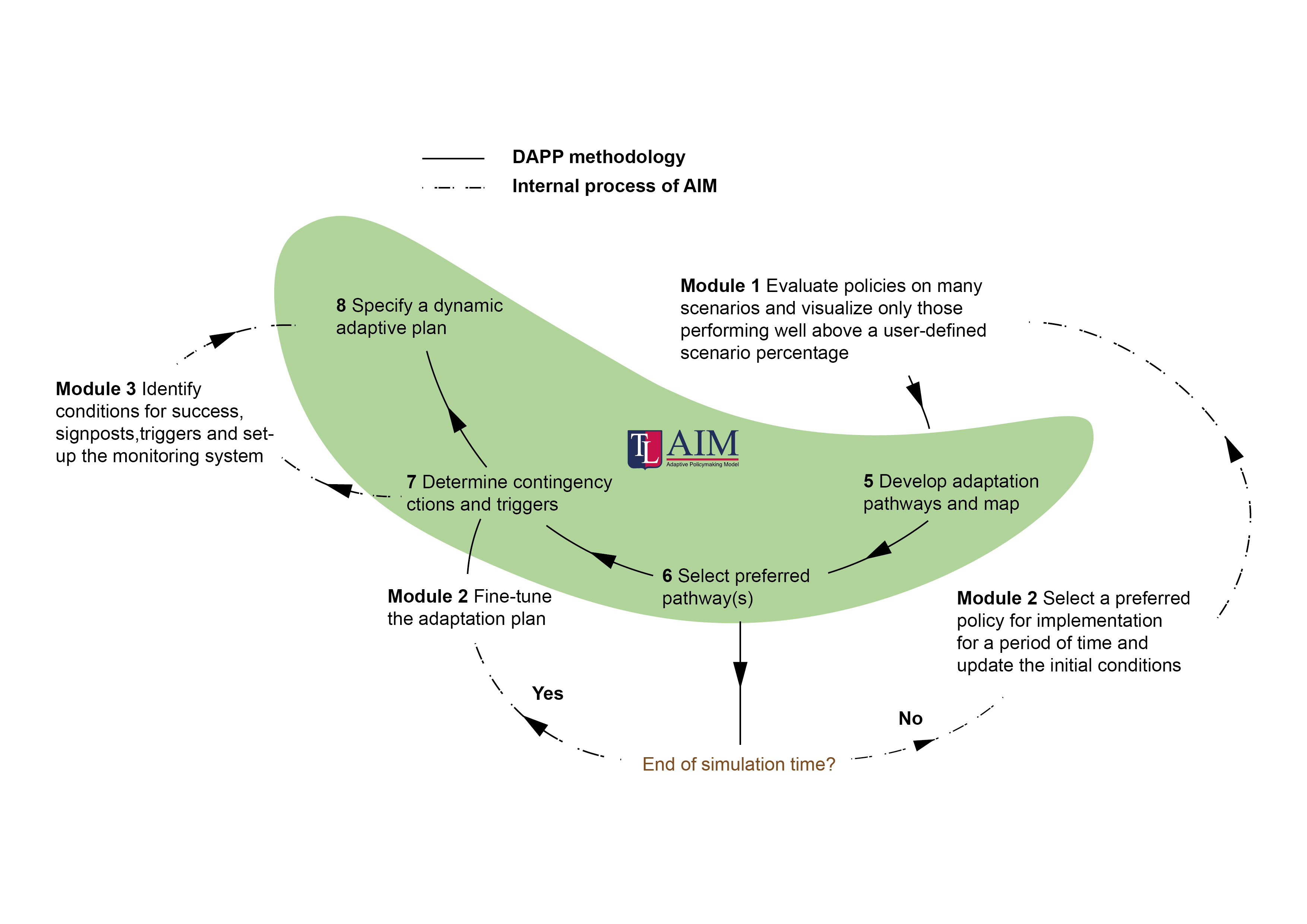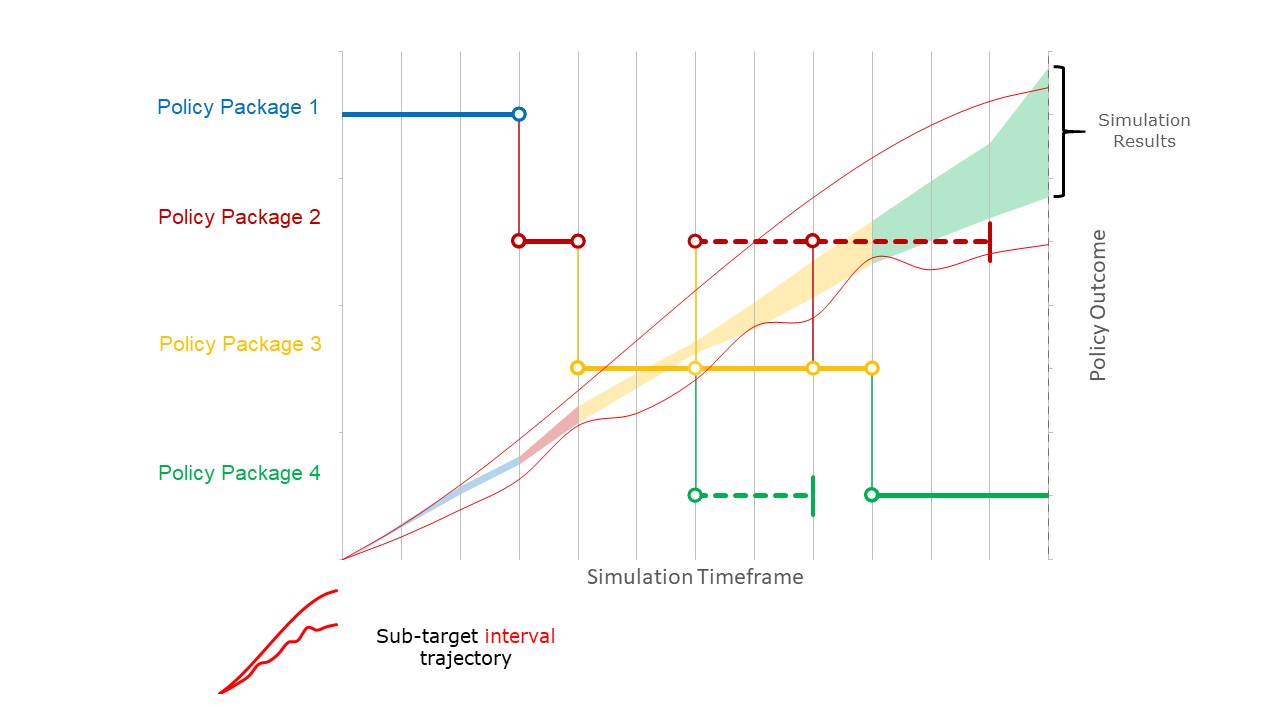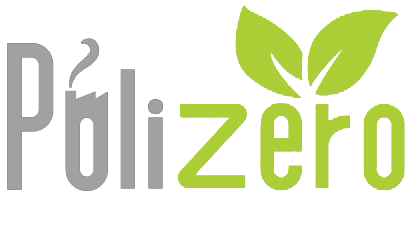TEEM-AIM
Policymakers deal with uncertainty about different external factors, such as climate change, population growth, new technologies, economic development, and their impacts on policies. Moreover, not only environmental conditions, but also societal perspectives and preferences may change over time, including stakeholders’ interests and their evaluation of plans. Usually, decisionmakers in many policy domains, assume a projection of current trends in the future. They develop a static ‘optimal’ plan using a single ‘most likely’ future, often based on the extrapolation of trends, or a static ‘robust’ plan that will produce acceptable outcomes in the most plausible future. However, if the future turns out to be different from the one assumed, the plan is likely to fail. In such a situation, under-assessed ad-hoc policy adaptation usually occurs to adapt to the new reality. Adaptation over the course of time is not only determined by what is known or anticipated at present, but also by what is experienced and learned as the future unfolds and by the policy responses to events. To address uncertainty in policymaking a new planning paradigm based on the design of dynamic adaptive policy pathways (DAPP), has emerged. With dynamic and adaptive policies, the focus is on short-term planning, with simultaneous description of potential future adaptive actions (from the design phase) that can be deployed in case the future evolves unexpectedly, so that the final target is achieved.
In this context, Figure 1 presents the logic behind the Adaptive PolIcymaking Model (AIM), a plugin toolbox facilitating decision-making under uncertainty, which builds on the strengths of Exploratory Modeling and Analysis (EMA), implements main steps of the DAPP methodology, and can be linked to different energy system models, enabling the development of DAPP through transdisciplinary modeling approaches (example in Box. 1). In particular, the AIM (i) investigates the conditions under-, and the timeframe beyond- which a policy starts to deviate from the set targets, (ii) visualizes a map of Dynamic Adaptive Policy Pathways (DAPP), and (iii) sets up a monitoring system, enabling the tracking of critical parameters affecting policy outcomes, triggering real world policy adaptation if needed. To do so, AIM implements the DAPP methodology, which achieves dynamic robustness by using: a. the concept of “sell-by” date, which is the date after which a policy starts to perform poorly and an alternative policy should be implemented, and b. a monitoring system which allows the end-user to monitor real-world critical contextual evolutions that trigger the initiation of the policy adaptation process.

Overall, AIM is a valuable participatory tool for providing quick answers to relevant experts and end-users, allowing a tight loop between stakeholders and modeling teams to be established; the timely identification of options and scenarios that are of stakeholders’ interest or disinterest is, thus, facilitated.



